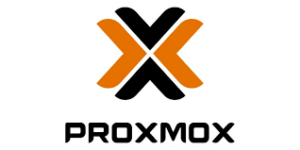Learn how to migrate from VMware VM to Proxmox. Our VMware Support team is here to help you with your questions and concerns.
Migrating from VMware VM to Proxmox: A Step-by-Step Guide
Are you considering switching from VMware to Proxmox? With its increased flexibility, lower costs, and a host of additional features, Proxmox is an excellent alternative to VMware.

Today, we are going to explore the benefits of using Proxmox. We will also take a look at two methods to successfully migrate our VMs from VMware to Proxmox.
An Overview:
- Why Choose Proxmox?
- How to Migrate from VMware to Proxmox: Two Methods
- Advanced Migration Tips
- Integration with Other Tools
- FAQs: VMware to Proxmox Migration
Why Choose Proxmox?
Proxmox VE is an open-source server virtualization platform that integrates KVM and LXC. It offers a robust solution for running both virtual machines and containers on a single platform.
It’s not only easy to install and manage but also packed with features that meet a wide range of virtualization needs. Here are a few key advantages:
- Unlike VMware, Proxmox is free and open-source, making it a more affordable choice for virtualization.
- Proxmox supports both full virtualization and container-based virtualization, providing flexibility in how we deploy our workloads.
- Proxmox offers a powerful and intuitive web interface that simplifies the management of virtual environments.
How to Migrate from VMware to Proxmox: Two Methods
Migrating our virtual machines from VMware to Proxmox can be done using either Proxmox’s new import wizard or a manual method.
Method 1: Using the Proxmox Import Wizard
Proxmox VE 8 introduced a new integrated VM Import Wizard in 2024, which streamlines the migration process by reusing the storage plug-in system for seamless integration with APIs and web-based interfaces. Here’s how to use it:
- First, make sure we are using Proxmox VE version 8 or higher, with the latest system updates applied.
- Then, go to Datacenter > Storage > Add > ESXi in the Proxmox VE interface.
- Next, enter the IP address, username, and password of the VMware ESXi host.
- After that, choose the VMs we want to import. Also, specify the import settings and click `Import`.
- In the advanced settings, you can:
- Select a new ISO image for the CD-ROM drive.
- Choose different storage targets for each disk.
- Configure network hardware models or bridges.
- Disable the import of certain disks, CD-ROM drives, or network devices.
This method simplifies the migration process and works well for users who prefer a guided, UI-based approach.
Method 2: Manual Migration from VMware to Proxmox
For a more hands-on approach, we can manually migrate our VMs from VMware to Proxmox by following these steps:
- In the vSphere Client, go to the host and click Configure > Services > SSH > START.
- Then, locate the storage path of the VM we want to migrate.
- Next, click Storage > FC-DPT > Summary to view the path.
- Now, use WinSCP to connect to the host IP of the VM.
- Then, go to the VM storage path and make sure we can see the `.vmdk` file.
- Now, create a new VM and configure the BIOS settings to UEFI (OVMF) and the hard disk drive type to SATA in Proxmox.
- After that, copy the `.vmdk` files from the VMware host to the Proxmox server using the SCP command.
- Now, import the VMDK disk into the Proxmox VM using the command:
qm importdisk VM_ID /var/lib/vz/VMDK_FILE STORAGE_TARGET
- Then, configure the imported disk as `Unused Disk` in Proxmox and set the correct boot order.
- Finally, start the VM in Proxmox and verify that it has been successfully migrated.
Advanced Migration Tips
Here are some advanced tips to help with migration:
- Use Proxmox’s built-in tools to fine-tune storage settings, such as choosing the right file system (ZFS, LVM, or Ceph) for your workloads, enabling write-back cache, or adjusting I/O limits to maximize performance.
- Take advantage of Proxmox plugins like PBS (Proxmox Backup Server) for efficient backups and storage replication or use API hooks and custom scripts to automate repetitive tasks and enhance system management.
- Use Proxmox’s REST API or CLI tools to create scripts that automate VM migrations, snapshots, or disaster recovery plans, saving time and reducing the potential for human error.
Integration with Other Tools
Proxmox integrates well with various tools and platforms, enhancing functionality:
- Deploy and manage containers directly on Proxmox or use it as a host for Kubernetes clusters, combining VM and container workloads for a flexible infrastructure.
- Use Ansible for configuration management and automation across the Proxmox environment, enabling consistent and repeatable deployments.
- Integrate with monitoring solutions like Zabbix or Grafana to visualize performance metrics and monitor system health in real-time.
FAQs: VMware to Proxmox Migration
- Why should I migrate from VMware to Proxmox?
- Proxmox offers a cost-effective, open-source virtualization platform with support for KVM and LXC containers, along with a user-friendly web interface. It’s a powerful alternative to VMware that can reduce your virtualization costs.
- Will data be lost during the migration process?
- While data loss is unlikely, it’s essential to back up our VMs before starting the migration. After migration, thoroughly test the VMs to ensure they function correctly and that data integrity is maintained. For extra security, consider using third-party backup solutions like Vinchin.
[Need assistance with a different issue? Our team is available 24/7.]
Conclusion
Migrating from VMware to Proxmox can significantly boost our virtualization environment. This offers us greater flexibility and cost savings.
In brief, our Support Experts demonstrated how to migrate from VMware VM to Proxmox.




0 Comments